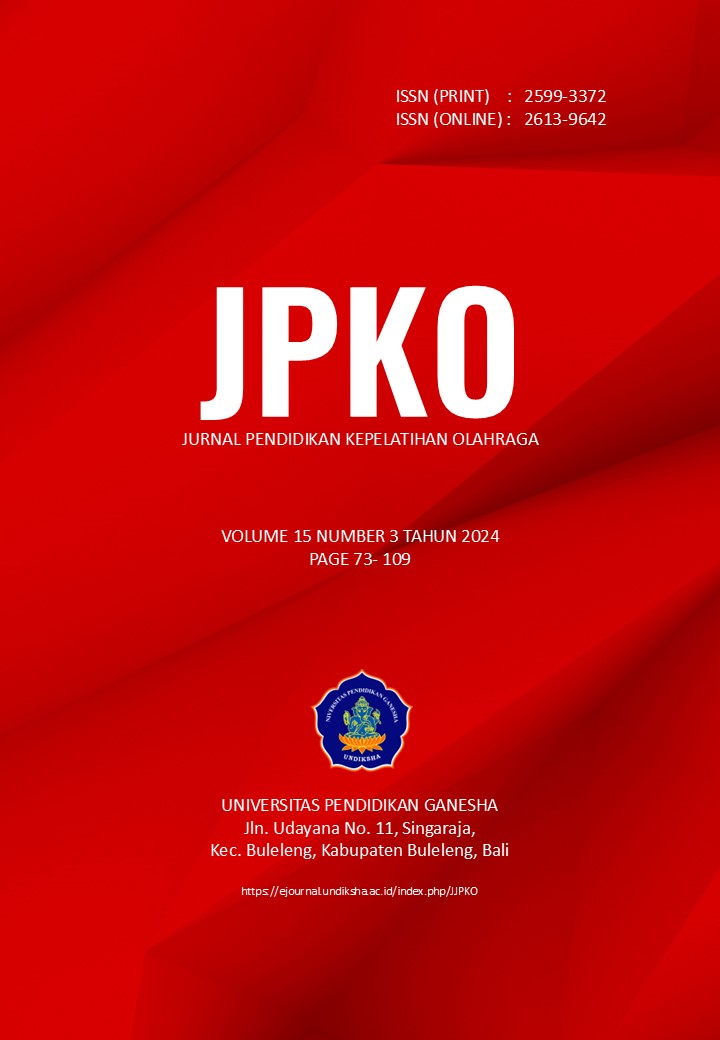Development of a Game-based Shot Put Motion Task for Junior Hight School Student
Keywords:
motion tasks, shot put, gameAbstract
PJOK learning motion tasks encourage students to learn to move and learn through movement in fun situations. The absence of game-based shot put material movement assignments for junior high school students prompted this development research to be carried out. Using the ADDIE model, this article focuses on discussing two stages, namely the design stage and the development stage. Game-based shot put material motion tasks are designed at easy, medium and hard difficulty levels. The research instrument consists of validation sheets from content experts and PJOK practitioners. Data analysis was carried out descriptively quantitative-qualitatively. The results of the research showed that the PJOK content expert's validation score reached 71, and the PJOK practitioner's score reached 72 from a maximum score of 75. Based on the results of the research and discussion, it was concluded that the game-based shot put material movement assignment for junior high school students was included in the very good category and met the criteria in accordance with curriculum, ensuring adequacy of movement, the presence of internalized character elements and ensuring the security and safety of students. It is recommended that PJOK SMP teachers can implement game-based shot put material motion tasks
for SMP students.
Downloads
Published
How to Cite
Issue
Section
License

This work is licensed under a Creative Commons Attribution-ShareAlike 4.0 International License.
Authors who publish with the Jurnal Pendidikan Kepelatihan Olahraga Undiksha agree to the following terms:
- Authors retain copyright and grant the journal the right of first publication with the work simultaneously licensed under a Creative Commons Attribution License (CC BY-SA 4.0) that allows others to share the work with an acknowledgment of the work's authorship and initial publication in this journal.
- Authors are able to enter into separate, additional contractual arrangements for the non-exclusive distribution of the journal's published version of the work (e.g., post it to an institutional repository or publish it in a book), with an acknowledgment of its initial publication in this journal.
- Authors are permitted and encouraged to post their work online (e.g., in institutional repositories or on their website) prior to and during the submission process, as it can lead to productive exchanges, as well as earlier and greater citation of published work. (See The Effect of Open Access)









